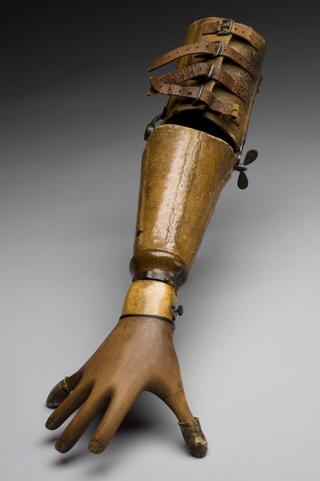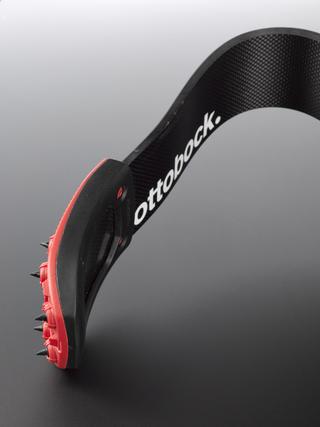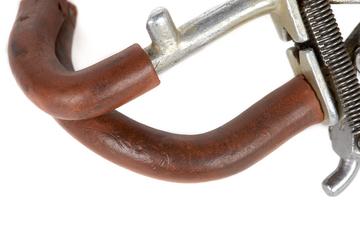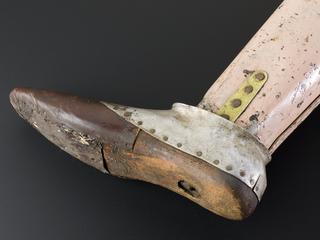

Artificial left leg for amputation above knee, 1901-1940
This artificial left leg was made for someone who had their leg amputated above the knee. It is made from willow and leather. It follows the basic design established by the so-called Anglesey leg. This was named after the Marquis of Anglesey. He wore a leg made to this design after he lost one during the Battle of Waterloo in 1815. Earlier versions were also called ‘Clapper’ legs after the sound the leg made when fully extended.
Wooden prosthetic legs were heavy. They were replaced by lighter, metal versions after design innovations following the First World War. 41,000 British servicemen lost one or more limbs during the conflict. However, the Anglesey limb remained popular well into the 20th century. It was relatively lightweight and capable of a natural-looking walking movement.
Details
- Category:
- Orthopaedics
- Collection:
- Sir Henry Wellcome's Museum Collection
- Object Number:
- A500465
- Materials:
- whole, willow and covering, leather
- type:
- artificial leg
- credit:
- Aberdeen Hospital




